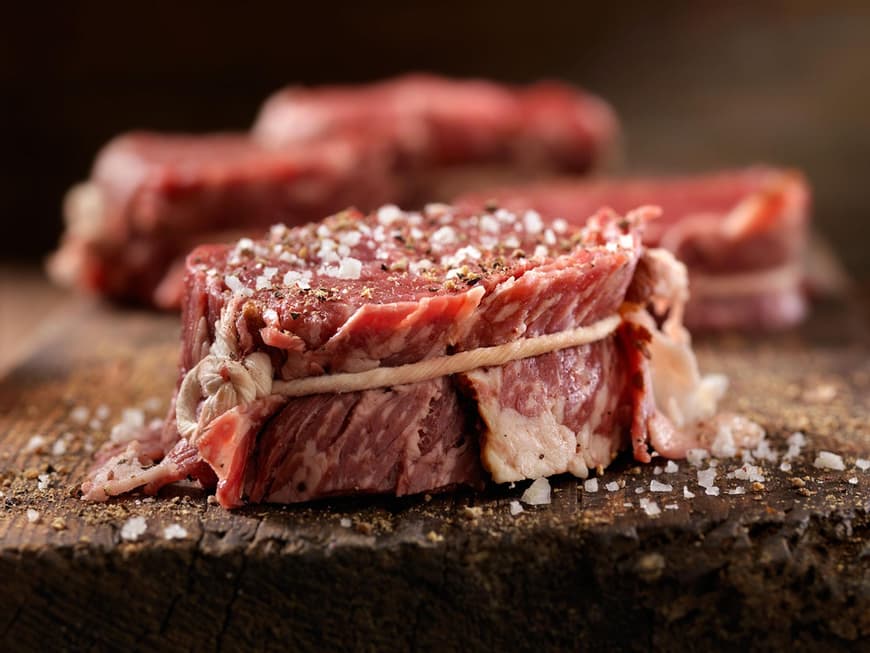
What is barding?
The term barding (not to be confused with "bridging") refers to the process in which a piece of lean meat is coated or covered with thin slices of meat. The meat of wild animals is often used for this. Typical barding meat is usually rabbit legs, fillets or roulades. Beef and pork fillets and venison loins are particularly popular. However, there are also other types of meat, such as fallow deer legs, quail or pork fillet medallions, which are well suited to barding.
Normally, lean meat in particular quickly becomes dry in the oven and loses its flavor. However, you can prevent this process by barding. In addition to meat, you can also bard some fruit or vegetables such as kohlrabi. Dates or prunes wrapped in bacon are often prepared in this way. However, fruit and vegetables are rarely barded in comparison to meat.
Why you should bard the meat
Unfortunately, it is often the case that lean meat, such as venison, loses liquid during cooking and therefore becomes dry. The reason for this is the dry heat supply. The bacon, which coats the barded meat, dries it out more slowly during roasting. This keeps it nice and juicy even after a longer cooking process. On the one hand, the melted fat flows into the meat under capillary action and, on the other, the layer of bacon blocks the unwanted release of meat juices. The bacon not only keeps your meat juicy, but also releases flavorful aromas. However, you should make sure that the bacon is not smoked too much or has too strong a flavor of its own. If the bacon is too aromatic, it will quickly mask the actual taste of your meat.
How does barding work?
When barding the meat, you should make sure that the bacon is not cut too thick. The thickness of the bacon should be around 2 millimetres. Barding bacon slows down the cooking heat as it prevents direct access to the surface of the meat. A frequently used bacon for barding is fresh fat bacon, which is also known as green bacon in many regions. As this is not smoked and only has a slight taste of its own, it is particularly suitable.
You should wrap the bacon around your meat when barbecuing so that there are no gaps. Depending on the shape of the piece of meat, you can wrap the layer of bacon with kitchen string to ensure that it does not come loose during cooking. You should avoid using skewers to pierce the bacon, as this can damage the meat fibers and cause the meat juices to escape. As a result, the meat loses its juices. This method used to be used more frequently and was referred to as larding. It has since been largely replaced by barding.
If you want to wrap a whole roast with bacon and cut it into slices, it is advisable to knot the loops of kitchen twine individually. You can then easily slice the roast without the string, and therefore the bacon casing, coming off the roast.
Due to the delay in cooking, you should allow a little more time for the meat. As you do not have direct access to the surface of the meat through the layer of bacon, we recommend using a thermometer to check the temperature inside the meat. In professional kitchens, the meat is rare on the inside at around 50° C. At around 65° C it is pink on the inside and at around 70° C it is cooked through. This guide can help you to take the meat out of the oven according to your cooking preferences or those of your guests.
However, if you want to achieve browning when roasting, you should remove the bacon from the meat about 10 minutes before your desired cooking time. With roasted pieces, the bacon can also be served with the meat, depending on your own taste. You should only refrain from serving the bacon with braised pieces, as it not only makes them look less attractive, but also has a negative effect on the consistency.
As an alternative to bacon, you can also use a well-watered pork net. This also protects the meat from drying out.
